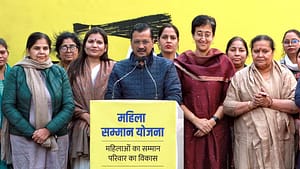Opposition Accuses Chairman of Bias, Plans Resolution for His Removal
In an unprecedented move, the INDIA bloc, a coalition of opposition parties, is preparing to initiate a resolution to remove Rajya Sabha Chairman Jagdeep Dhankhar from his position. This marks the first attempt in Indian parliamentary history to remove a Rajya Sabha chairman, highlighting the growing friction between the opposition and the chair over alleged bias and conduct during proceedings.
What Prompted the Move?
Opposition parties, led by Congress and supported by the Trinamool Congress (TMC), Samajwadi Party (SP), and others, claim that Dhankhar’s handling of parliamentary proceedings has been partisan. The INDIA bloc alleges that:
- Microphones of opposition leaders, including Leader of Opposition (LoP) Mallikarjun Kharge, have been repeatedly turned off during sessions.
- Personal remarks made by the chair against opposition members are unacceptable.
- The chairman allowed ruling party members multiple opportunities to speak while denying the same to the opposition.
The decision by INDIA bloc to act was reportedly made after Monday’s session, where opposition leaders claimed to witness conduct they described as “unbelievable.” Congress MP Jairam Ramesh stated, “The government does not seem to want the House to function, and the chair’s actions reflect this.”
Procedure for Removing a Rajya Sabha Chairman
The removal of the Rajya Sabha chairman, who also serves as the Vice President of India, follows a constitutionally prescribed process:
- Resolution Submission: A notice for the resolution must be submitted to the Rajya Sabha Secretariat, backed by signatures from at least one-fourth of the total members.
- Debate and Voting in Rajya Sabha: The resolution requires a majority vote—more than 50% of members present and voting.
- Approval in Lok Sabha: If passed in the Rajya Sabha, the resolution must then be approved by a simple majority in the Lok Sabha.
This process stems from Articles 67(b), 92, and 100 of the Constitution, emphasizing the challenge of successfully removing a chairman.
Opposition’s Numbers Game
While the INDIA bloc claims to have secured the required number of signatures, the coalition faces a significant hurdle—the ruling BJP-led National Democratic Alliance (NDA) holds a majority in both Houses. Analysts believe the resolution is unlikely to pass, but even initiating the process is seen as a political statement against alleged bias in parliamentary proceedings.
A TMC source clarified, “This is not just about the chair; it is about how the BJP is using the institution to suppress dissent.”
Political Implications
This development underscores the growing polarization within Indian parliamentary politics. The move signals the opposition’s readiness to challenge perceived overreach by constitutional authorities, even at the risk of procedural failure.
- Historic Significance: This is the first attempt to remove a Rajya Sabha chairman, adding weight to the opposition’s grievances.
- Strategic Messaging: While the INDIA bloc might lack the numbers to succeed, the resolution draws attention to their narrative of safeguarding democratic principles.
Government’s Response
The ruling BJP has dismissed the allegations, arguing that the opposition is creating distractions to avoid substantive debates. BJP leaders claim that parliamentary disruptions are being orchestrated to malign the chair and stall governance.
What’s Next?
If the opposition submits the resolution, it will trigger a heated debate in the Rajya Sabha, testing the INDIA bloc’s unity and the ruling party’s defense. While the resolution may not pass, it will serve as a crucial moment in the ongoing tussle over parliamentary conduct and democratic accountability.
As the nation watches, the move to remove Jagdeep Dhankhar has set the stage for one of the most dramatic episodes in India’s parliamentary history.
This news report is curated with insights from multiple reliable news sources.




















